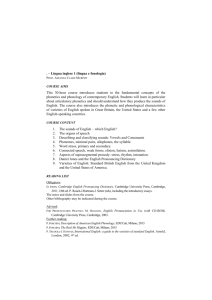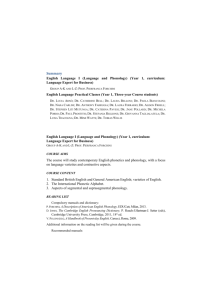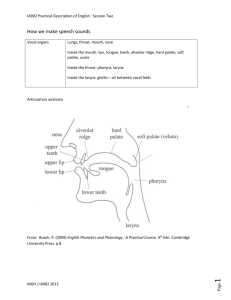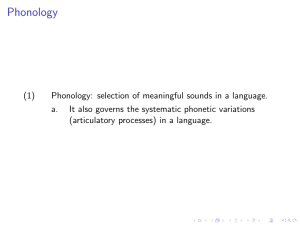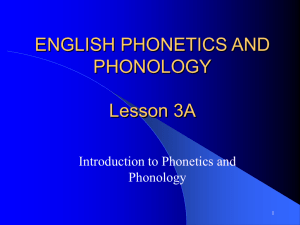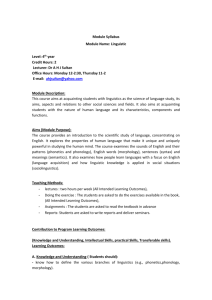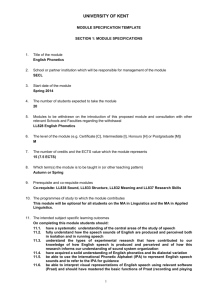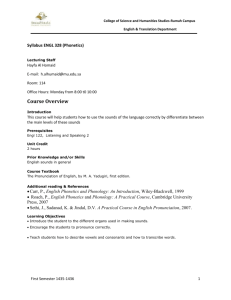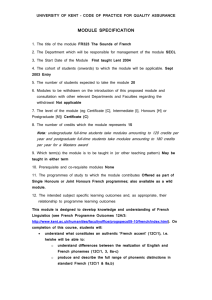Phonetics and Phonology
advertisement
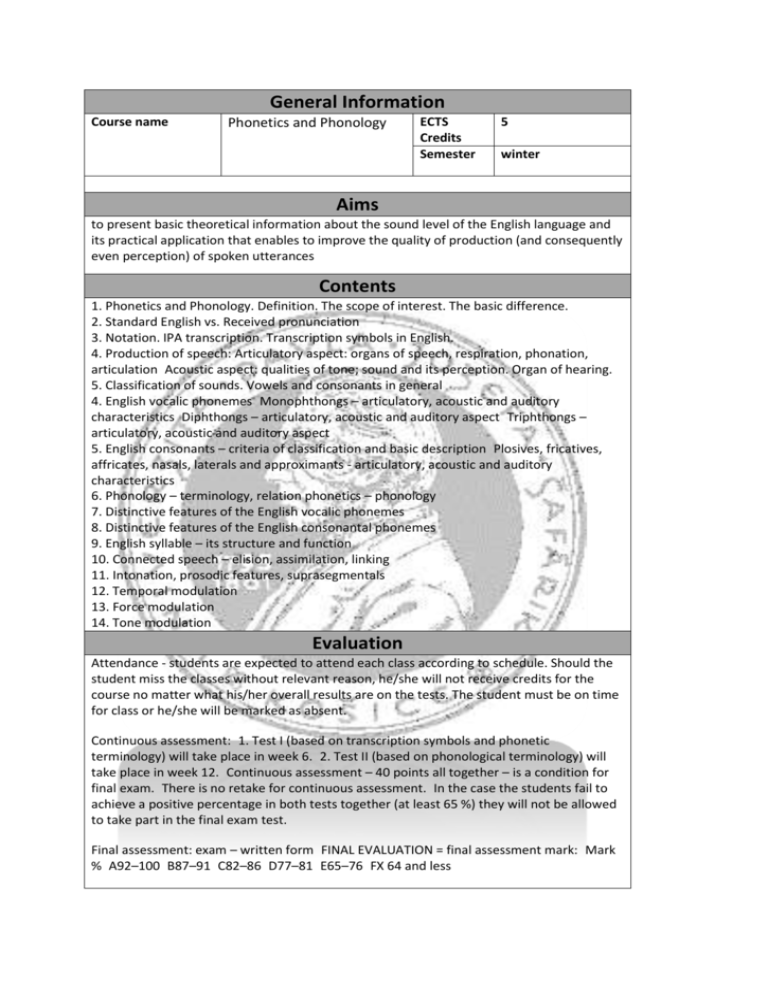
General Information Course name Phonetics and Phonology ECTS Credits Semester 5 winter Aims to present basic theoretical information about the sound level of the English language and its practical application that enables to improve the quality of production (and consequently even perception) of spoken utterances Contents 1. Phonetics and Phonology. Definition. The scope of interest. The basic difference. 2. Standard English vs. Received pronunciation 3. Notation. IPA transcription. Transcription symbols in English. 4. Production of speech: Articulatory aspect: organs of speech, respiration, phonation, articulation Acoustic aspect: qualities of tone; sound and its perception. Organ of hearing. 5. Classification of sounds. Vowels and consonants in general 4. English vocalic phonemes Monophthongs – articulatory, acoustic and auditory characteristics Diphthongs – articulatory, acoustic and auditory aspect Triphthongs – articulatory, acoustic and auditory aspect 5. English consonants – criteria of classification and basic description Plosives, fricatives, affricates, nasals, laterals and approximants - articulatory, acoustic and auditory characteristics 6. Phonology – terminology, relation phonetics – phonology 7. Distinctive features of the English vocalic phonemes 8. Distinctive features of the English consonantal phonemes 9. English syllable – its structure and function 10. Connected speech – elision, assimilation, linking 11. Intonation, prosodic features, suprasegmentals 12. Temporal modulation 13. Force modulation 14. Tone modulation Evaluation Attendance - students are expected to attend each class according to schedule. Should the student miss the classes without relevant reason, he/she will not receive credits for the course no matter what his/her overall results are on the tests. The student must be on time for class or he/she will be marked as absent. Continuous assessment: 1. Test I (based on transcription symbols and phonetic terminology) will take place in week 6. 2. Test II (based on phonological terminology) will take place in week 12. Continuous assessment – 40 points all together – is a condition for final exam. There is no retake for continuous assessment. In the case the students fail to achieve a positive percentage in both tests together (at least 65 %) they will not be allowed to take part in the final exam test. Final assessment: exam – written form FINAL EVALUATION = final assessment mark: Mark % A92–100 B87–91 C82–86 D77–81 E65–76 FX 64 and less Bibliography lectures Kavka, S. J.: (2009) Modern English Phonemics. Lodz: Wydawnictwo Akademii Humanistyczno-Ekonomicznej. McMahon, A.: (2002) An Introduction to English phonology. Edinburgh University Press. Roach, P.: (2000) English Phonetics and Phonology. A Practical Course. Cambridge University Press. Roach, P.: (2009) English Phonetics and Phonology. A Little Encyclopaedia of Phonetics. available at: www.cambridge.org/elt/peterroach/resources/Glossary.pdf Štekauer, P.: (2000) Rudiments of English Linguistics. Prešov, Slovacontact. Štekauer, P.: (1993) Essentials of English Linguistics. Prešov, Slovacontact. Giegerich, H. J.: (1992) English Phonology. An introduction. Cambridge: Cambridge University Press. Wells, J.C.: (1993) Longman Pronunciation Dictionary. Longman. or any pronunciation dictionaries available

